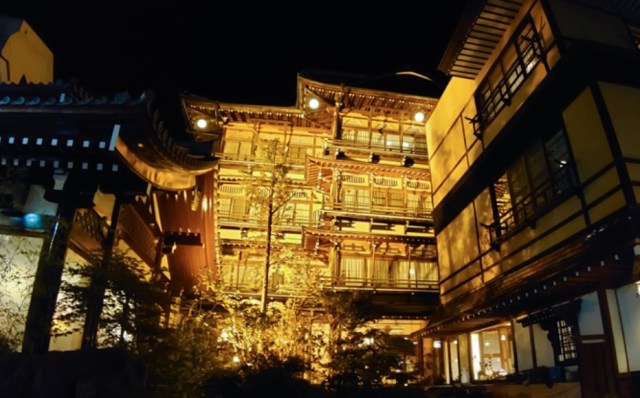
Stretching from Tohoku to Kyushu, these are the top picks for when you need a soak and a break from modern stress.
Japan’s hot springs rising to must-visit status for international visitors might be a relatively recent development, but within Japan taking a trip to take a dip in geothermally heated water has been a popular pastime for a long, long time. So while you can find plenty of glistening, modern hotels with hot spring baths, there’s a special appeal to onsen (as hot springs are called in Japanese) towns with a traditional or retro vibe.
Jalan, one of Japan’s most popular travel and hotel booking websites, recently conducted a survey, asking participants to name their favorite onsen town that made them feel like they were taking a trip back in time with its classical or nostalgic atmosphere. 1,088 responses were collected from travelers aged 20 to 59, and their top five picks are below.
5. Kurokawa Onsen
When it comes to hot springs towns on Japan’s southwestern island of Kyushu, Oita Prefecture usually gets most of the attention. Head over to Kumamoto Prefecture, though, and Kurokawa Onsen is waiting for you, with rustic ryokan inns and their outdoor baths lined up along the river that runs through the town.
Special passes can be purchased that allow access to 27 different inns’ baths, so you can pick between leisurely soaking in a few favorites or making the rounds of the town, strolling from one bath to the next while dressed in the yukata robes provided by the inns.
4. Ikaho Onsen
How long have people been coming to Gunma Prefecture’s Ikaho Onsen? The town and its baths are mentioned in the Manyoshu, the oldest known book of Japanese waka poetry, which was compiled all the way back in the year 759. Ikaho is known for its two different types of hot spring water, with the kogane no yu (“gold water”) having a golden brown color due to its high iron content and the shirogne no yu (“silver water” or “platinum water”) being clear.
Ikaho is arguably as famous for its stone stairway as it is for its hot springs. The 365 steps are a symbol of the town, with inns, day-use baths, and souvenir shops on either side as you make your way up, and there’s also a free-to-use outdoor onsen foot bath in case you need to rest your feet before you make it to the top.
3. Shibu Onsen
Shibu Onsen is another hot spring destination with a long history, its springs having first been discovered some 1,300 years ago. The Nagano Prefecture town’s hot spring district is laid out as a series of cobblestone streets with accommodations ranging from small, family-run inns to the opulent Kanaguya (seen above), an inn built in the Taisho era (1912-1926) that’s been designated a tangible cultural property by the Japanese government.
In addition to individual inns’ baths, Shibu Onsen also has nine sotoyu, or “outer baths,” scattered around the town, one of which is pictured above, which guests staying the night in Shibu Onsen are given a key to and can use free of charge. Making the circuit of all nine of these compact baths in a day is said to provide both health benefits and good luck.
2. Ginzan Onsen
Yamagata Prefecture’s Ginzan Onsen is the ritziest spot on the list, and also the northernmost. The ideal time to visit is when the town is blanketed in snow and bathed in the gentle light coming form the inns’ latticework windows and the gas lights on the bridges stretching across the river.
Ginzan doesn’t offer multi-access passes like Shibu and Kurokawa Onsen do, but if you’re craving some variety in your hot spring soaking, there’s the Shiroganeyu public onsen, which was designed by award-winning Japanese architect Kengo Kuma.
1. Shima Onsen
And last, we head back to Gunma Prefecture for the survey’s top pick. Shima Onsen may not be able to match the first-glance wow-factor of some of the other places on this list, but that’s exactly what makes it so appealing to those who voted for it. There is history here, as Shima Onsen’s first hot spring was discovered in the 900s. But what makes the place so popular among its fans is how it feels like a preserved hot spring town from two or three generations back.
As Japan’s population increasingly moves to big cities, Shima Onsen’s small-town vibe, without nary a neon sign, convenience store, or even a streetlight to be seen has a special sort of nostalgia. It might not be the sort of place most people would want to live full-time, but the relaxed, old-fashioned lifestyle it represents is definitely something worth experiencing for a weekend when you need a break from the hustle and bustle of modern life.
Source, images: PR Times
● Want to hear about SoraNews24’s latest articles as soon as they’re published? Follow us on Facebook and Twitter!
[ Read in Japanese ]